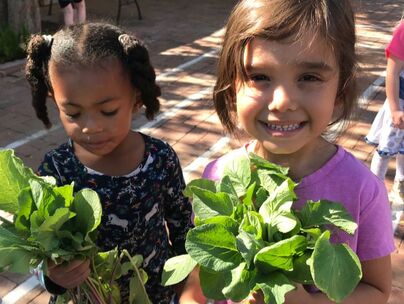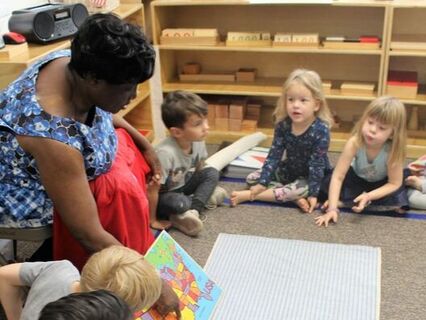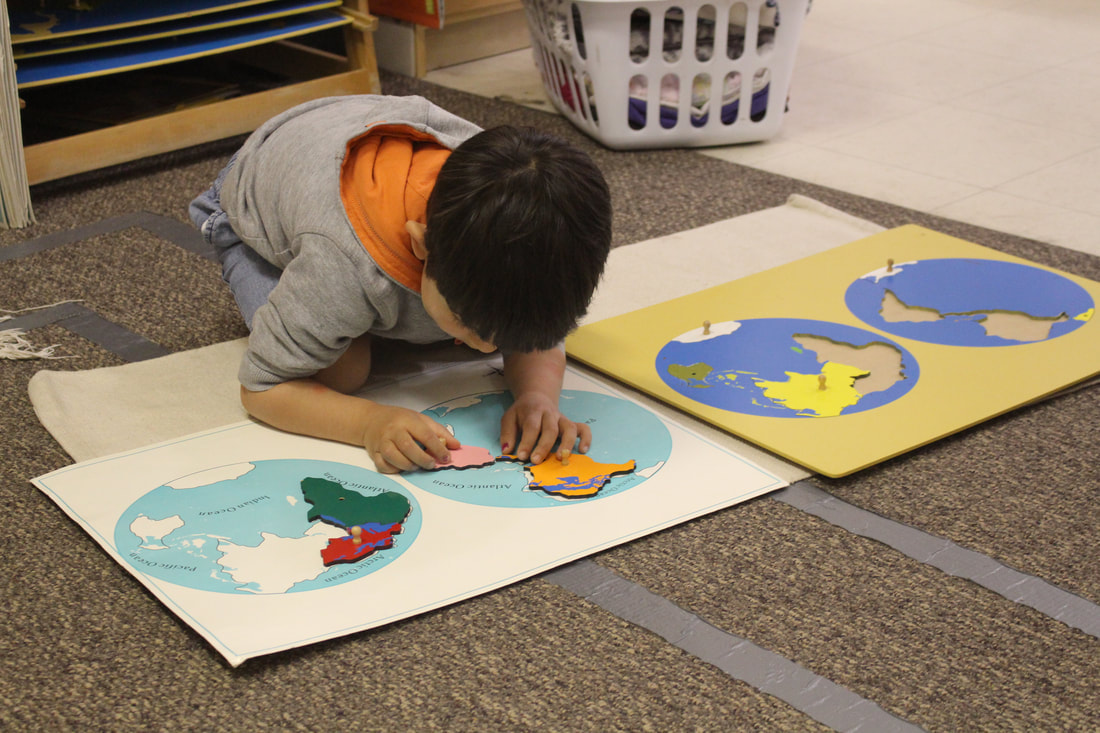About Our SchoolHeartprints Montessori is a cozy, Montessori preschool that was founded in 2010. The campus is located at the junction of Broadway Road and College Avenue in Tempe, Arizona. Heartprints has two American Montessori Society certified instructors. All assistant teachers are trained in Montessori methods. A low child-to-teacher ratio allows instructors to focus on the growth and development of each individual student as they progress through a curriculum focused on the following areas:
The CurriculumMontessori materials are designed to stimulate a child’s interest and are organized into 5 different curriculum areas: Practical Life, Sensorial, Language, Mathematical, and Cultural subjects, including science, music and art.
Practical Life In practical life children learn everyday tasks. Children develop coordination through activities such as pouring, scooping, and spooning. They learn to take care of themselves through the activities of buttoning, lacing, zipping, etc., and they learn to take care of the environment through sweeping, table-washing, and recycling. In practical life we also teach children grace, courtesy and respect for others, which includes learning good manners. Sensorial This area is for the development and refinement of the senses. Different materials cover different areas of the brain and modalities of perception, such as the visual perception of size, color, and shape; the tactile experience of texture and matching temperature; the auditory discrimination of loudness and softness, and so on. Mathematics The Montessori approach to mathematics is highly effective and makes learning mathematics very interesting and easy. We provide materials that help children learn concepts such as numeration, place value, the operations of addition, subtraction, multiplication and division. Children will learn math through concrete actions, thus developing a deep understanding of the abstractions that will follow. Language All areas in Montessori are interrelated. What the children learn in other departments will help them learn language. Concrete activities will pave the way for learning to read and write. Children learn with materials that will help them develop reading and writing skills in a pleasurable way. Cultural Subjects Here children learn Geography (map puzzles, globes etc.), science (e.g., biology, plants and animals), and finally music and arts. Child Care Software: BrightwheelAt Heartprints, we believe the school and family partnership is essential in providing the best care for children. We use the child care software, Brightwheel, for:
What Learning Looks Like for ToddlersWe provide care for toddlers in our Toddler Room (ages 1-2) and Transitional-Toddler Room (age 2). Take a look at what a Montessori toddler classroom is like:
What Learning Looks Like for PrimaryOur Primary Room is for children ages 3-5. Even though the video below is labeled "Kindergarten," it traditionally occurs in the same type of classroom. In this video, you can see what the progression, environment, materials in Primary are like:
|
Lizzie Makalisa-Dennis
|







